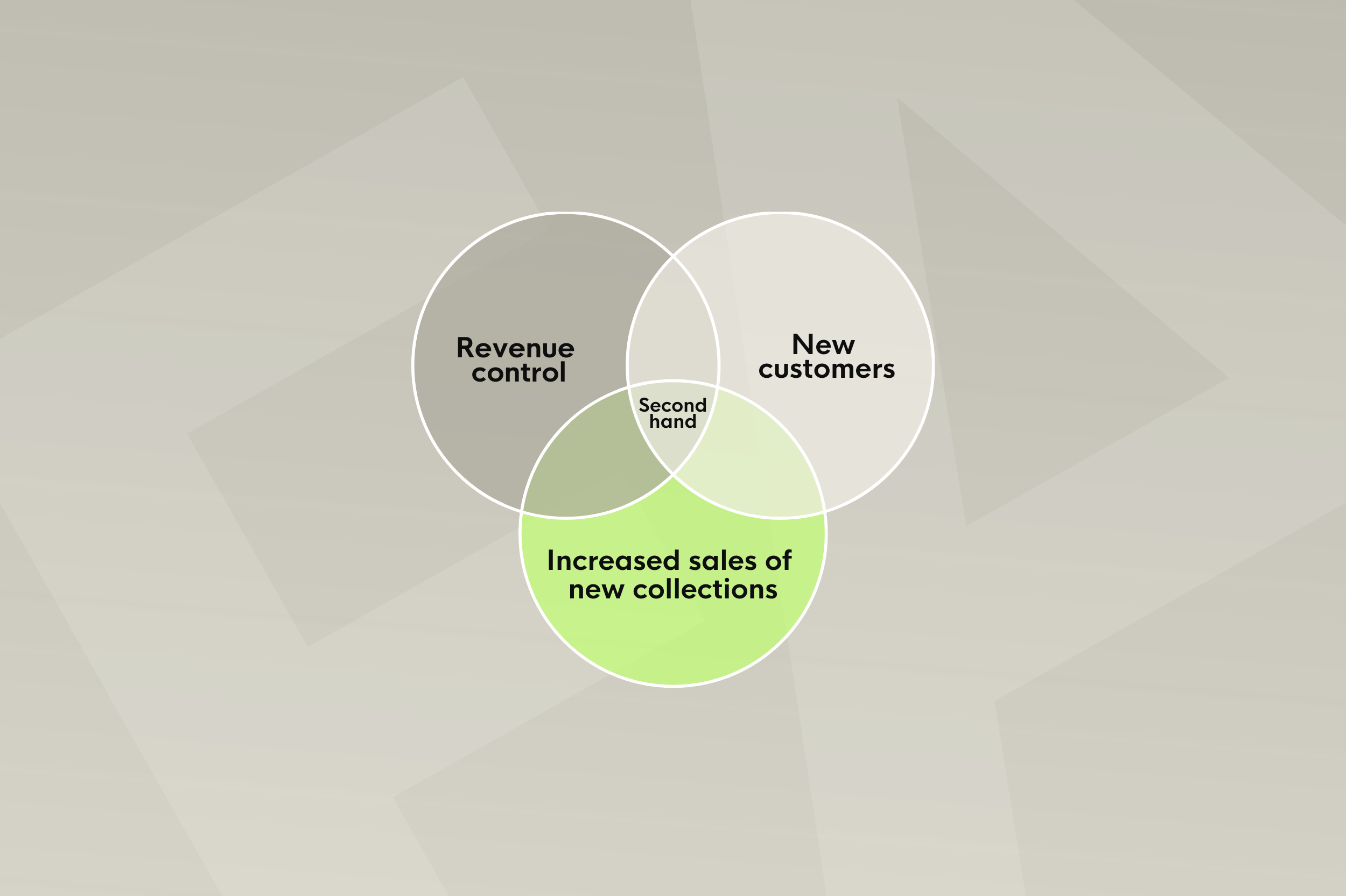Trump era tariff crisis: a major opportunity for second-hand

“Liberation Day” for some, hangover for others…
The recent announcement from our friend Donald hit like a sledgehammer in the fashion industry—especially for brands exposed to the U.S. market.
By deciding to impose massive tariff increases on textile imports (up to 60% on Chinese goods, with comparable rates on products from Vietnam, Cambodia, or Bangladesh), the American president has launched a full-scale trade war.
For brands, the shock is real. They now face soaring sourcing costs, shrinking margins, and a total lack of visibility in their global operations. Business as usual—almost.
But as the saying goes, it’s not the fall that matters, it’s the landing.
Because in the midst of this storm, one unexpected lever might just emerge: second-hand, the ultimate resilience solution.
A trade war with cascading effects
The first consequences of this protectionist policy are already being felt. Markets are swinging wildly—particularly fashion and luxury stocks. Major heritage houses are taking the hit, as are sports brands that had shifted production to countries now overwhelmed by tariffs. And with more than 98% of apparel and 99% of footwear sold in the U.S. being imported, the supply chain is under pressure. Once again, brands find themselves in a precarious position. Another crisis… After Covid, the Yellow Vests (in France), the war in Ukraine, the retail crash—this tariff blow just adds fuel to the fire.
What stance should brands take? Absorb cost increases at the risk of collapsing margins? Or pass them on to consumers at the risk of tanking sales?In an economy already burdened by inflation, the choice is anything but easy. In this climate of global instability, a deeper trend is emerging: brands are strategically retreating to their core markets. Faced with geopolitical, logistical, and pricing uncertainty, many are freezing international ambitions and focusing on home turf. This mass recentralisation is mechanically intensifying local competition—risking a bloodbath—at a time when acquisition costs on ad platforms like Meta and Google are already exploding, and before any potential new taxes hit the GAFAM. In this tense landscape, brands must urgently rethink acquisition and loyalty strategies. This is where second-hand offers an economic, relational, and highly differentiating lever. It allows brands not only to attract new customers (70% of the time on average—often younger, more eco-aware, and price-sensitive), but also to re-engage their existing customer base with tangible results: +20% repurchase rate among customers who have taken part in a resale operation. In other words, it’s a powerful tool for both business and CRM performance.
A trade-resilient alternative
In the face of instability, second-hand could also become a credible and agile alternative.Unlike new products, pre-owned items already on the market are not affected by the new tariffs. Stock is available locally, sourcing costs are low (already amortised), and logistics are decoupled from fragmented global supply chains. Put simply: this model enables brands to generate revenue without being exposed to import volatility. It’s a resilient, quick-to-activate model aligned with evolving consumer expectations. And then there’s the price: second-hand holds a key advantage—being more accessible without devaluing the brand. On the one hand, the selling price of a second-hand item is naturally lower than that of a new product. On the other hand, the take-back mechanism allows brands to reward loyal customers with store credit for items returned. The customer doesn’t just feel like they’re getting a discount—they feel like they’re getting a fair price: they helped extend the life of a product and are receiving tangible value in return. This is a double win: economic and symbolic—a meaningful answer to today’s crisis.
A deeper trend, accelerated by crisis
It would be reductive to view second-hand as merely a defensive play.
This is part of a long-term transformation. The global second-hand market continues to grow, projected to reach $350 billion by 2030, and is currently growing three times faster than fast fashion. The model increasingly resonates with younger generations: Nearly 70% of consumers under 35 regularly buy second-hand, and over 80% do so primarily for environmental reasons. The economic instability triggered by new trade policies is only reinforcing this shift. According to ThredUp, nearly 60% of consumers would turn to second-hand if prices rise due to tariffs—66% among Millennials and Gen Z.
The opportunity for brands: structure your second-hand strategy and prepare for uncertainty
Thanks to platforms like Faume, brands can deploy this strategy without complicating their operating model. However, while second-hand offers a strong short-term advantage, it won’t be entirely immune to the long-term effects of this crisis. Reduced imports may eventually lead to a shortage of new products entering the market, which could mechanically limit the volume of future second-hand supply. Rising demand and limited inventory could drive prices up, which would weaken accessibility and reduce the appeal of the model. That’s why brands need to take action now—to lead the shift rather than suffer it. By structuring their second-hand ecosystem today, brands retain control over their commercial strategy while aligning with consumers’ environmental, economic, and emotional expectations.
Conclusion: “Take change by the hand before it grabs you by the throat”
Sir Winston Churchill knew how to say it best, and quoting him today feels especially relevant. This tariff crisis reveals one truth: fashion must reinvent itself. Second-hand is no longer a marketing bonus or a CSR add-on—it’s a strategic response to global complexity. As another iconic Brit, Vivienne Westwood, put it: “Buy less, choose well, make it last.” In a world where instability is becoming the norm, second-hand enables brands to stay on course, secure their business, and build a more authentic connection with their customers. Most of all, it allows this crisis to become a catalyst—for a more local, sustainable, and resilient fashion model.
Stay ahead of the game!
Sign up to FAUME's The Secondhand Review newsletter
Read inspiring stories from brands that have successfully launched their secondhand businesses with FAUME







